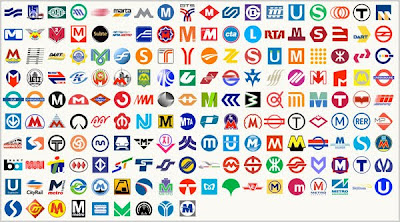Metro recently
bragged about how much escalator performance has improved under the pricey Metro Forward campaign. But a closer look reveals an ugly truth. Two of the major--and most highly touted--replacements under Metro Forward have yielded among the worst performing escalators in the entire system.
All three escalators at Dupont South, which were closed for months for a complete replacement, rank, on average, 387th in availability among Metro's 588 escalators. At Foggy Bottom, the three new "transit grade" escalators rank a collective 471 out of 588. One of the new escalators at Foggy Bottom has an availability of 79.7 percent - in 556th place out of 588 escalators.
For every 17 minutes that Metrorail is open, an escalator goes out of service.
"This is what Metro Forward is all about: delivering more reliable service and significantly improved escalator
availablity [sic] for our riders," said Metro General Manager Richard Sarles in a press release.
Really? All this money is being spent for what exactly?
How could brand new escalators break so often? I think it's because of
this.
Perhaps measuring escalator "availability" system-wide is not the most honest way to measure performance.
Since June 1, Lee Mendelowitz (aka @
MetroEscalators) has been tracking escalator outages published through the
WMATA API. Here, he uses this data to set the record straight on Metro escalator performance. All of the data used to generate this report is available at
DC Metro Metrics.
Here's what he found:
Q: Is the Metro escalator availability for the second quarter really 91.9 percent?
A: Possibly.
Escalator availability is defined as the average percentage of escalators that are operating while Metrorail is open. Both unscheduled outages as well as scheduled maintenance and inspections result in a lower value for escalator availability. The escalator availability computed from WMATA data is 93.5 percent for June 1st through September 15th.
However, this value is a generous overestimate due to missing data. Since a station manager must manually report each escalator outage, some go unreported for several hours. On other occasions, outages are never reported at all.
For example, on Sunday 9/15, @MetrorailInfo reported that all nine escalators were out of service at Navy Yard station for 90 minutes due to a power outage, but these escalator outages were never listed on the WMATA website. This is the norm rather than the exception. WMATA never officially listed the escalator outages associated with power outages at Union Station (6/25), Bethesda (7/3), Shaw-Howard (7/8), or Clarendon (7/10). Escalator outages that go unreported have no impact on the escalator availability.
Q. Is system-wide escalator availability is a good measure of what Metrorail riders experience?
A: No.
The Metrorail system has 588 escalators, which means there are many reliable escalators that inflate the system-wide escalator availability average. In fact, 139 of Metro’s 588 escalators are operating at least 99 percent of the time that Metrorail is open. It’s the chronically underperforming escalators that frustrate riders the most, and these get “washed out” when computing a system-wide average.
In addition, riders frequently use at least four escalators for each Metrorail trip. An escalator availability of 92 percent means that there is a 28 percent chance that at least one of those four escalators will be out of service. Despite this fact, WMATA has set their target escalator reliability at just 89 percent.
Instead of looking at system-wide escalator availability, one can look at how frequently escalators go out of service. Since June 1st:
• There have been 7,255 unscheduled outages.
• For every 17 minutes that Metrorail is open, a new escalator goes out of service.
• 215 escalators (36.6 percent) have a mean time between failures (MTBF) of less than 7 days.
• 38 escalators (6.5 percent) have a MTBF of less than 3 days.
Q: True or false: "When an escalator is out of service today, more often than not, it is for scheduled rehabilitation or preventive maintenance," said Rob Troup, Deputy General Manager for Operations.
A: False.
Most escalator outages are due to unscheduled outages.
• Since June 1st, there have been 10,443 escalator outages, and only 31.8 percent of these were for scheduled maintenance or inspections. Most scheduled outages are for preventative maintenance inspections that take place overnight while the Metrorail system is closed.
• Only 9.2 percent of escalator outages that occur between 7 a.m. and 9 p.m. are due to scheduled maintenance or inspections.
Q: True or false: “In service status is tracked as units are reported to the Metro escalator/elevator control center. Because this is a manual process, an out of service escalator may take up to an hour to be reflected in the computer tracking system; this margin of time does not significantly change the availability score.”
A: False.
I’ve already written a few blog posts detailing escalator outages that go unreported for several hours. See here, here, and here.
A very revealing plot is looking at the time of day when unscheduled escalator outages are first reported. The hour of day with the most escalator outage reports is always the opening hour:
• On weekdays, 9.6 percent of unscheduled outages are reported between 5 and 6 a.m.
• On weekends, 19.9 percent of unscheduled outages are reported between 7 and 8 a.m.
It is highly unlikely that such a large fraction of escalators stop working in the opening hour of business when very few customers are using the Metrorail system. Instead, these escalators stopped working at some point during the previous day and go unreported until a station manager reports them during the first hour when Metro opens.
Click for larger
Q: How reliable are the six new street escalators at Dupont South and Foggy Bottom that have been replaced during the Metro Forward campaign?
A: The Foggy Bottom street escalators re-opened in July 2011, and the Dupont Circle South street escalators re-opened in October 2012. Despite being Metro’s newest escalators, they are among the worst performing in the system.
Since June 1st:
• The middle escalator, A03S02, at Dupont South has had 42 unscheduled outages – 11th most in the system.
• The right escalator, C04X03, at Foggy Bottom has had 46 unscheduled outages – 10th most in the system.
• The middle escalator, C04X02, at Foggy Bottom has an availability of 79.7 percent - in 556th place out of 588 escalators.
Click for larger
Conclusions:
While escalator availability may have improved in recent years, it is a misleading measure of what riders experience. The computed value for escalator availability is inflated by the fact that outages often go unreported for hours or are never reported at all. Escalator outages continue to mount at an alarming rate – one new outage every 17 minutes that Metrorail is open. The newly replaced escalators at Dupont South and Foggy Bottom are among the worst performing in the system. While Metro plans on replacing another 128 escalators by 2020, it may end up being just more of the same.
















 Oct. 11, 2012
Oct. 11, 2012 February 21, 2012
February 21, 2012 March 4, 2010
March 4, 2010




